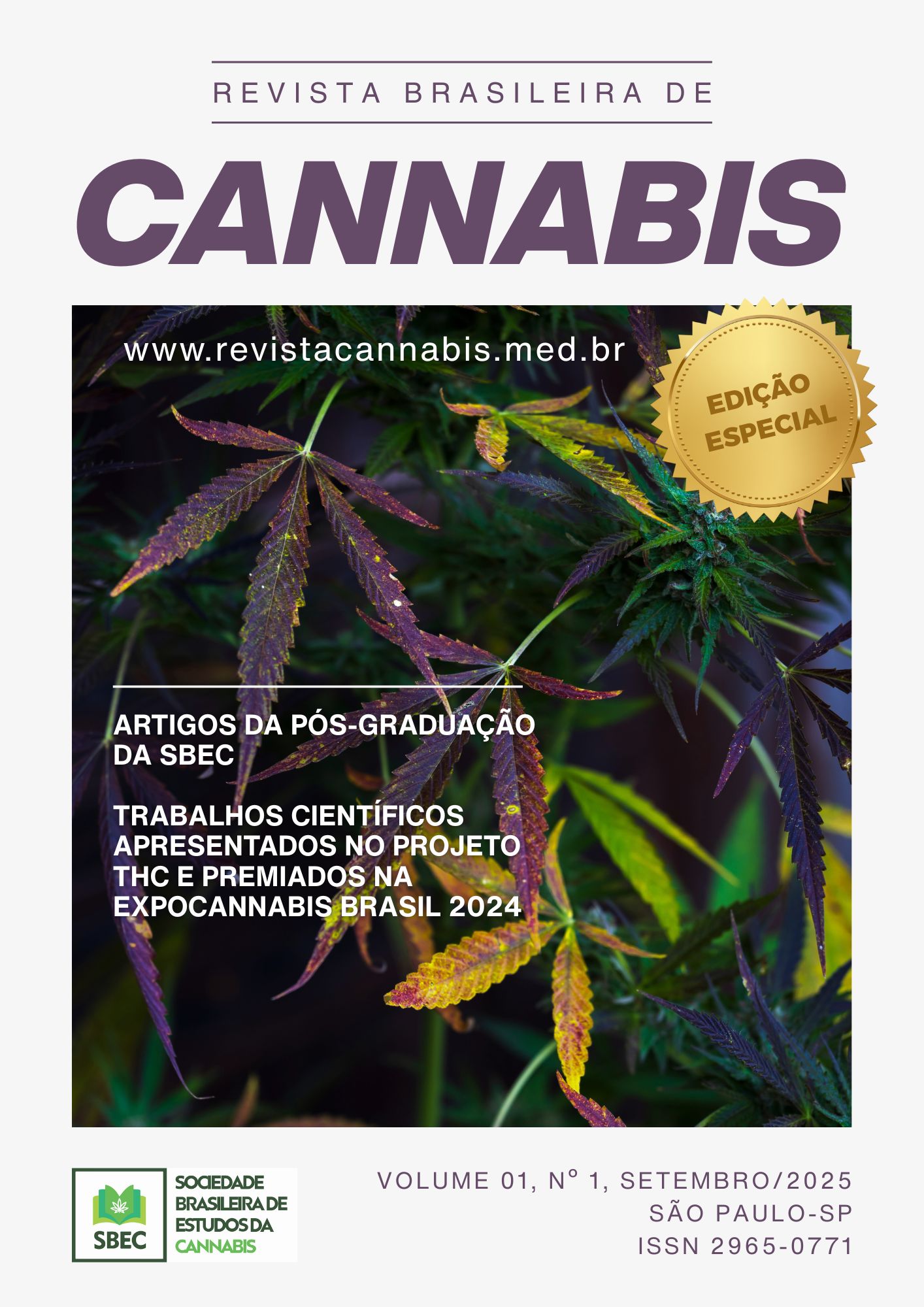MONITORING METHOD FOR THE DECARBOXYLATION OF CANNABINOIDS IN CANNABIS SATIVA L. EXTRACTS AT ASSOCIAÇÃO TERAPÊUTICA CANNABIS MEDICINAL FLOR DA VIDA
DOI:
https://doi.org/10.58731/2965-0771.2025.114Abstract
The Associação Terapêutica Cannabis Medicinal Flor da Vida provides formulations based on ethanolic extracts of C. sativa inflorescences for the treatment of associated patients. To evaluate cannabinoid decarboxylation in the extract, a Thin Layer Chromatography (TLC) method was developed. This method identifies cannabinoids in both their acidic and decarboxylated forms, allowing verification of whether the cannabinoids in the extract and final product are in their pharmacologically active form (i.e., decarboxylated). The monitoring of the decarboxylation process, assessing the presence of CBDA, THCA, CBD, THC, and CBN (the main degradation product), was performed using reversed-phase TLC (C18; methanol: water with 0.2% acetic acid 92:08 v/v), observing under ultraviolet light (λ 254 nm) and further revealed by nebulizing sulfuric vanillin solution. The TLC technique proved to be efficient for monitoring the decarboxylation and degradation of cannabinoids in the extracts, enabling adjustments and optimizations in the production process. The ability to observe THCA, CBDA, and CBN under UV light makes the method practical, eliminating the need for chemical reagents.
Keywords: Chromatography, Thin Layer; Quality Control; Chromatography, Reverse-Phase; Cannabinoids; Decarboxylation.
References
1 Lewis-Bakker MM, van de Donk T, Houweling M, van der Kooy F, Beumer TL, den Hartigh J, et al. Extractions of medical cannabis cultivars and the role of decarboxylation in optimal receptor responses. Cannabis Cannabinoid Res. 2019;4(3):183-94.
2 American Herbal Pharmacopoeia. Cannabis Inflorescence Monograph. Upton R, Craker L, ElSohly M, Romm A, Russo E, Sexton M, et al. 2014.
3 Wang M, Wang YH, Avula B, Radwan MM, Wanas AS, van Antwerp J, et al. Decarboxylation study of acidic cannabinoids: a novel approach using ultra-high-performance supercritical fluid chromatography/photodiode array-mass spectrometry. Cannabis Cannabinoid Res. 2016;1(1):262-71.
4 Hazekamp A, Peltenburg A, Verpoorte R, Giroud C. Chromatographic and spectroscopic data of cannabinoids from Cannabis sativa L. J Liq Chromatogr Relat Technol. 2005;28(15):2361-82.
5 Spadafora ND, Felletti S, Chenet T, Citti C. The influence of drying and storage conditions on the volatilome and cannabinoid content of Cannabis sativa L. inflorescences. Anal Bioanal Chem. 2024;416:3797–3809.
6 Brasil. Agência Nacional de Vigilância Sanitária. Farmacopeia Brasileira. 7th ed. Brasília, DF: Anvisa; 2024. v. 2 – Monografias Plantas Medicinais, p. 149-157. Cannabis, Inflorescência Monografia.
7 Berman P, Futoran K, Lewitus GM, Mukha D, Benami M, Shlomi T, et al. A new ESI-LC/MS approach for comprehensive metabolic profiling of phytocannabinoids in Cannabis. Sci Rep. 2018;8(1):14280.
Downloads
Published
How to Cite
Issue
Section
License
Copyright (c) 2025 Revista Brasileira de Cannabis

This work is licensed under a Creative Commons Attribution 4.0 International License.





